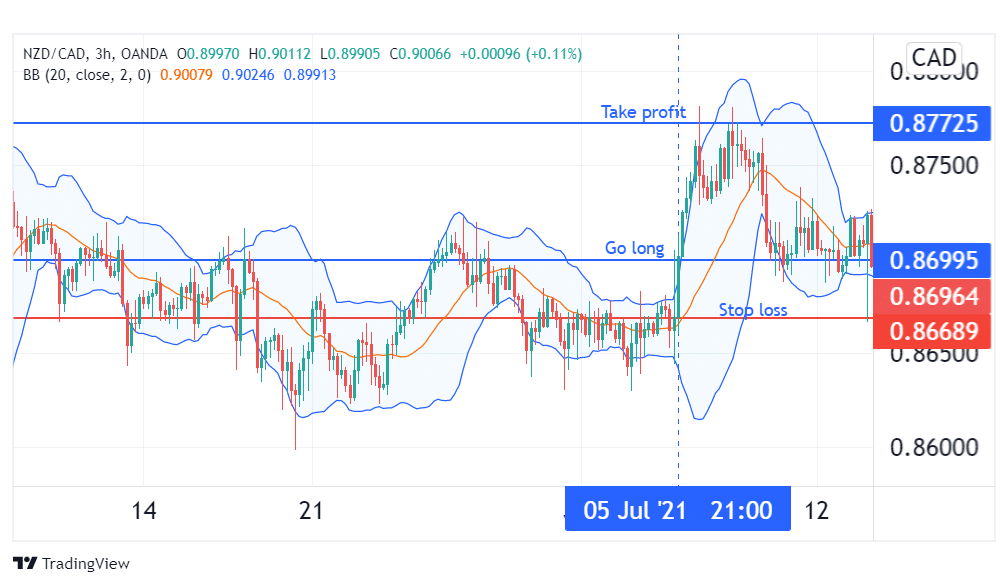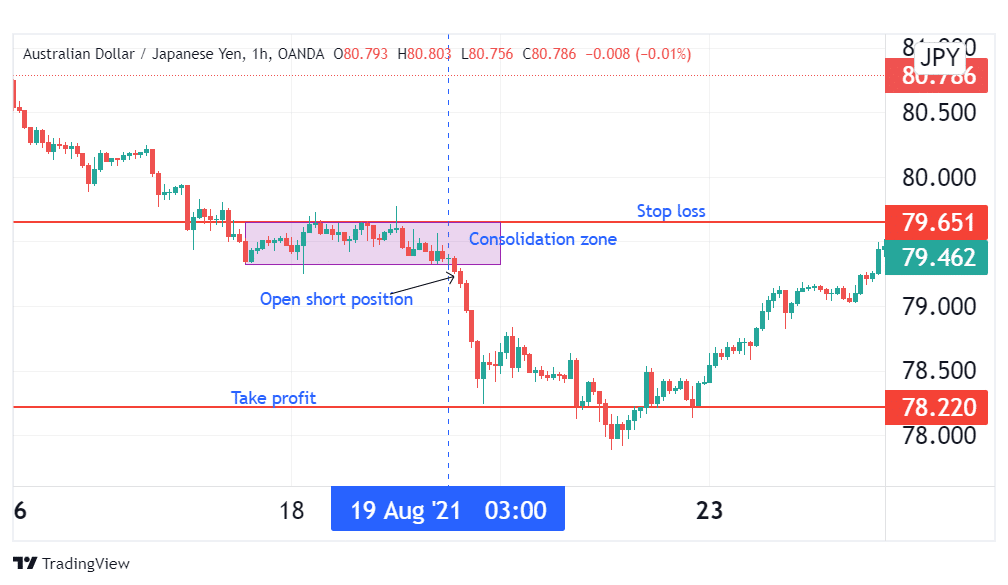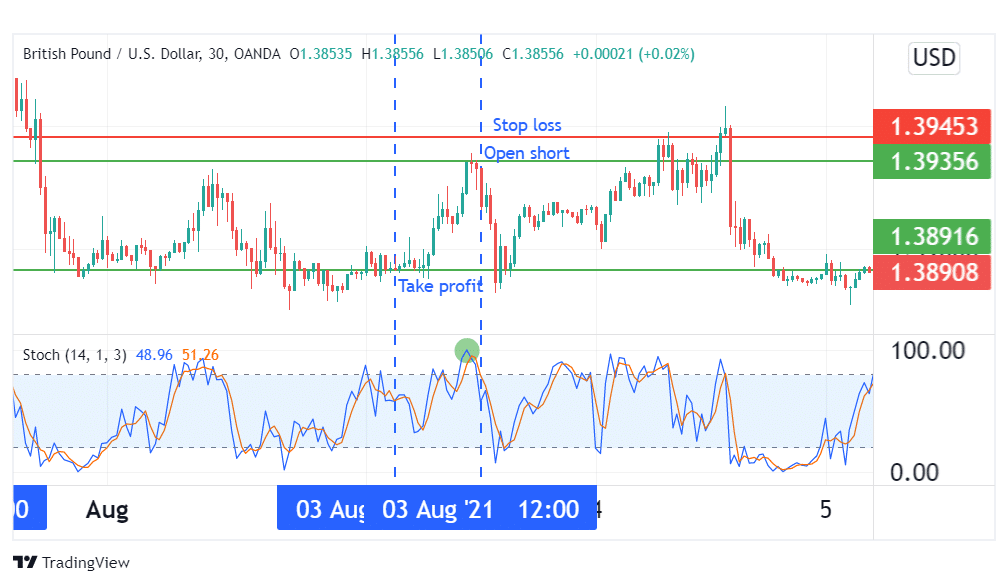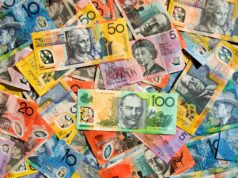The foreign exchange market never closes and operates on a 24/7 basis, making it impossible for any trader to track every single market movement and respond accordingly.

Since timing is everything in this market, traders need to devise an effective and time-efficient investment strategy. This makes it extremely important for traders to take note of the volume of activity in the market at any given time. Apart from liquidity, a currency’s trading range is also heavily dependent on several factors based on macroeconomics and geographical locations.
This makes it extremely important to understand the different time zones and the trading activity that takes place in them.
Two of the important time zones to consider for traders are:
- The U.S. Session: 8 a.m. to 5 p.m. EST
- Asian Session: 7 p.m. to 4 a.m. EST
What is the U.S. session?
New York is undoubtedly the 2nd largest marketplace in foreign exchange and also the financial center that guards the backdoor of the forex market. Trading activity in this session usually winds down to a minimum from its afternoon session till the Tokyo market opens the next day. Normally, most transactions are executed between 8 a.m. and noon in the U.S. session, which makes it a period of high liquidity since European traders still operate in the market at that time.
Since most currencies in the forex market are quoted with the U.S. dollar as the base and are traded against it, this session is of utmost importance. For example, if one had to trade GBP/JPY, he/she would first have to trade GBP against USD and then convert it into yen. This means that a GBP/USD trade involves two currency transactions: GBP/USD and USD/JPY. The volatility of the pair is also dependent on the correlation between the two aforementioned pairs.
What are the New York forex session hours?
The New York forex market is open from 8:00 AM to 5:00 PM EST. By opening time, the Asian session has been closed for several hours. In Europe, however, it is only 12:00 GMT in London, and the London and New York sessions overlap for the next four hours. The overlap causes increased trading activity and, as a result, more volatility.
Secrets for trading forex in New York session
This North American trading session is dominated by trades from the USA, with Canada, Mexico, and other South American countries contributing to it. The main currency traded is the USD, accounting for 80-85% of all transactions in this session. Therefore, a trader should pay particular attention to currency pairs containing the USD when trading in this session.
During the four-hour overlap with the European session, almost every pair can be traded. This is because there’s a large number of participants from either side of the Atlantic. In addition, American banks spend their mornings exchanging billions of dollars between themselves and European banks such as Deutsche Bank, the largest liquidity provider in existence.
Most US economic data is released in the morning hours of the US, about 1:30-3:00 PM GMT. These releases tend to cause volatility among USD pairs. In addition, the Federal Open Market Committee (FOMC) releases its minutes at around 6:00 PM GMT, which usually causes major movements of USD pairs.
It is also important to remember that major currencies belonging to the regions whose sessions are active see the most volatility in the given sessions. For instance, during the New York session, USDCAD is the most traded pair. When the New York and European sessions overlap, the EURUSD pair will see the highest volatility.
Lastly, on Friday evenings, the New York session is usually marked by low volumes and low volatility. This is because the European and Asian markets are already closed for the weekend. However, it is not unusual to see price reversals as many traders opt to take profits and close their positions. This is to avoid exposing themselves to risk emanating from any news that may be released during the weekend.
What are the best currencies to trade in the U.S. session?
When trading during this session, the GBPUSD, USDCHF, GBPCHF, and GBPJPY are good choices if you are a risk-tolerant trader. The trading activities in these currency pairs are particularly active because the transactions directly involve the U.S. dollar. When U.S. equity and bond markets open during the U.S. session, foreign investors have no choice but to convert their domestic currency into dollar-denominated assets to process those transactions. Usually, the GBPJPY and GBPCHF possess the widest daily ranges.
If you are a risk-averse trader, on the other hand, the USDJPY, USDCAD, and EURUSD are best for you. These three pairs offer market participants a decent price range to generate substantial profits with a smaller risk. This is due to their highly liquid nature, which allows an investor to efficiently and promptly cut losses or secure gains. The modest volatility which these pairs provide is ideal for traders pursuing long-term strategies.
Best New York session forex trading strategies
Breakout strategy
For this strategy to work, we need to identify a currency pair that satisfies the following conditions:
- Before the New York session opens, the pair must be in a strong trend.
- The price must be stuck at a major resistance/support level.
The next step involves waiting for the breakout to happen in the New York session and the price to close above or below the breakout. If our identified trend was bullish and prices breakout above the resistance level, we open a long position. The stop loss is set below the breakout line, while the take profit is set at the next major resistance level.
Alternatively, if our trend is bearish, we wait for prices to breakout below the support. When the price closes below this level, we open a short position and set our stop loss just above the breakout line. Using a higher timeframe, we identify the next major support level and set it as our take-profit.

In the example above, as soon as the EURUSD pair closed below the breakout line in the New York session, we opened our short position. The take-profit was set at the next major support level, a cool 59 pips away. The stop loss was ten pips above the breakout line, giving a risk to reward ratio of 1:5.9.
Breakout from Bollinger Bands strategy
Bollinger Bands is an indicator that utilizes three lines known as upper, middle, and lower bands. The distance between these bands fluctuates with market volatility. Further, these bands act as support and resistance levels for prices. Therefore, a breakout from these lines indicates the beginning of a trend. Depending on the direction of the breakout, you can open a long or short position and use the next major resistance/support level as your take-profit.

Another example above represents the NZDCAD pair. On 5th July 2021, its price staged a breakout from the upper Bollinger band towards the end of the New York session. This signified the beginning of an uptrend. Taking the breakout as the buy signal and using the middle band as our stop loss, the next major resistance level was at 0.87725. This was set as the take-profit level.
This particular trade generated a profit of more than 70 pips while carrying a 30 pip risk of loss. It is important to note that you do not have to close your trade at the end of the session. If the trend carries on even after the session, milk the markets for all you can get.
What is the Asian Session?
Trading in Asia is usually conducted by major financial hubs in the region, with Tokyo accounting for the largest market share, followed by Hong Kong and Singapore. Despite the overbearing presence of the Japanese Central Bank in the forex market there, Tokyo still remains one of the most important dealing regions in the Asia region. As it’s the first major Asian market to open daily, many large participants often use trading momentum as a benchmark to plan trading strategies and gauge market dynamics. Trading in the Asian session can appear thin from time to time for normal traders. However, large investment banks and hedge funds try to use this session to run important stop and option barrier levels.
Japan’s central bank, which holds several billion dollars worth of U.S. Treasury securities, plays an influential role in affecting the supply and demand of pairs such as the USDJPY. Large Japanese exporters also use this session to repatriate their foreign earnings, which also increases the pair’s fluctuations. Other pairs, such as GBPCHF and GBPJPY, remain volatile as central banks and large players anticipate the opening of the European session.
What are the Asian session hours?
In winter, the Asian session runs from 6:00 PM to 3:00 AM EST. In the summer, it’s open from 7:00 PM EDT to 4:00 AM EDT. To catch this session, traders in London and other areas in the GMT zone need to be up from 11:00 pm to 8:00 am GMT.
Secrets for trading forex in the Asian session
- Early in the day, when the session starts, only centers like Sydney are trading. Therefore, trading volumes will be predominantly low. For this reason, price movements tend to be minor compared to the US and European sessions.
- This session is characterized by lower liquidity than the London and New York sessions. This causes currency prices to consolidate or fluctuate within a small range. However, this is not all bad as some traders take advantage of the breakout when the Tokyo session ends and the London session starts.
- Japan’s economy is heavily reliant on exports, and Hong Kong is a major financial hub. Typically, the most market participants in the Hong Kong session are banks and export companies.
- More often than not, traders in this region use their home currencies in their trades. Therefore, currencies from the Asian-Pacific region are usually more actively traded in this session than other currencies from all over the world. This is why currency pairs involving the JPY, NZD, AUD, MYR, and HKD see the most volatility.
- Economic data from Australia, New Zealand, Japan, and other countries in the region is released during the Asian session. For the news trader depending on fundamental analysis, this means that the best time to trade currencies from the region has come.
- Most trades happen in the morning when most of the economic data we mentioned are released.
- Since this session is usually the earliest of them all, traders from other sessions often observe the Asian session and base their strategies on its outcome.
What are the best currencies to trade in the Asian session?
When trading in this session, risk-tolerant traders can go for USDJPY, GBPJPY, and GBPCHF because they possess broad ranges. This provides short-term traders with an opportunity to generate lucrative trades, averaging 90 pips. Both institutional investors and foreign investment banks process a significant number of USDJPY transactions when they enter the Japanese equity and bond markets. This is due to their massive holdings of dollar-denominated assets.
Risk-averse traders can go for pairs such as GBPUSD, USDCHF, and AUDJPY. All these pairs allow medium-term to long-term traders to take fundamental factors into account while making decisions. Because these currency pairs are moderately volatile, it helps shield such traders and their investment strategies from irregular market movements caused by intraday speculative trades.
What are the best Asian session forex trading strategies?
AUDJPY breakout trading strategy
The first step of this strategy is identifying a currency pair that’s in a strong trend. Additionally, the pair must be stuck in consolidation right before the beginning of the Asian session. The second step involves looking out for a breakout during the Asian session. Usually, breakouts in the current trend direction are preferred to reversals because the former tend to last longer.
For our third step, using a higher timeframe, we look for the next major support or resistance level, around which we place our take-profit. Depending on whether our prevalent trend was bullish or bearish, the stop loss can be placed below or above the breakout line, respectively.
Since the AUDJPY is the most traded currency pair in the Hong Kong session, let’s take it as an example.

From the AUD/JPY chart above, we can see the pair’s price was held in consolidation before the start of the Hong Kong session. The prevailing trend was bearish, and right after the session started, the pair staged a downward breakout.
It is important to note that due to the low trade volume of the Asian session, fake breakouts may drive you to losses. Therefore, when trading a breakout, wait for the second candlestick to form in the direction of the break, and open the trade at its opening price.
On August 19th, the bearish breakout allowed us to open our short position at a little above 79 JPY. The next major support level was around 78 JPY, which is where we placed our stop loss. Even if the price had not hit our stop loss by the end of the Asian session that day, the bearish trend continued. Eventually, our stop loss was hit a few hours later, signaling the success of our trade.
Range trading
The Asian session is the least volatile of all three sessions of the forex market. It tends to adhere to support and resistance levels more than its counterparts. For this reason, one can utilize these levels to enter profit-making trades during this session.

In the example above, we can see the GBPUSD pair’s price rose from 1.38916 up to 1.39356 USD during the Asian session of 3rd August. At this point, it met resistance and started a downward tumble. Since resistance and support levels are of utmost significance in this session, we can expect prices to find their way back to the session’s support level.
Further, from the highlighted section, the stochastic indicator indicated that at this resistance level, the pair was overbought. We, therefore, expect prices to fall as demand falls. We take 1.39536 as our entry into our short position and the session’s support level as our take-profit. The stop loss can be placed above the resistance level as we expect prices to come back to that level in the near future.
The result was a profit of more than 40 pips while risking only ten pips. This was a risk-reward ratio of 1:4. However, range trading may be ineffective in London and US sessions because volatility increases exponentially.
Final thoughts
The global forex market is larger in turnover than any other market and is characterized as being extremely liquid. Currency markets can also be volatile, which is caused by market participants reacting to financial and economic news. This can be anything from data releases with unexpected results to an unanticipated monetary policy change that the government adopts. Currency volatility can also stem from order flow, as market participants place orders to buy and sell FX based on private information. With over $3 trillion worth of transactions every day in forex globally, any intraday movements in currencies can have a significant effect on financial and economical decisions and outcomes.
The Asian and US session, along with the European or London Session, are the three most important time zones that every forex trader should follow. One session tends to take its cues from the one before it. For instance, if the U.S. markets are bullish or showing risk appetite, the Asian market will behave the same way and continue to do so until whatever news or sentiment that drives the U.S. markets is priced in. The best times to trade often comes when any two of these sessions overlap, which generates increased liquidity resulting in the fairest prices available.




